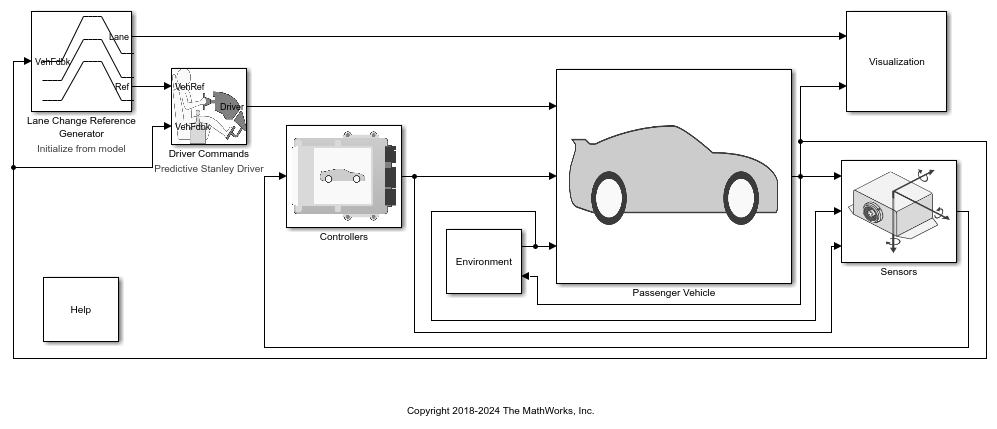Lane Change Reference Generator
Generate double-lane change maneuver reference signals
Description
The Lane Change Reference Generator block sets the parameters that configure the double-lane change maneuver.
After the vehicle reaches the reference velocity, the block commands a zero acceleration signal and generates a lateral reference trajectory as a function of the longitudinal displacement. The block also generates signals indicating the left and right lane boundaries as a function of the axle width.
Use the Steady-state initial
conditions parameter to specify the initial conditions for the maneuver. By
default, the parameter is set to Initialize from model, and the
simulation starts with the vehicle at rest at the specified initial position. If you want to
start the simulation at the non-zero steady-state velocity:
Set Steady-state initial conditions to
Solve using block parameters.On the Steady-State Solver tab, specify the initial conditions, workspace variable, and solver settings. Click Generate steady state solution.
After the simulation completes, set Steady-state initial conditions to
Resume from a workspace variable.Set Steady-state solution to start from, ssVar to the workspace variable you specified in step 2.
Run the simulation.
For an example, see Start Double-Lane Change Maneuver at Target Velocity.
Examples
Ports
Input
Output
Parameters
Version History
Introduced in R2019a
